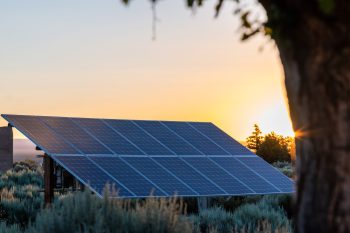© 2024 THE COOL DOWN COMPANY. All Rights Reserved. Do not sell or share my personal information.
“A material has been designed that combines the best of two possible structures: high energy density is combined with fast charging.”
Photo Credit: iStock
The experts at TU Delft labs in the Netherlands are continuing their mastery of salt — at least as it pertains to battery chemistry.
The team made headlines last year when Professor Marnix Wagemaker was highlighted for research into adding a cocktail of salts to batteries, resulting in increased lifespans and decreased lithium dependence.
Wagemaker and others, including experts from the Chinese Academy of Sciences, are now at it again. This time, a fast-charging sodium-ion battery they are working on could offer stable storage, as well as be the game-changing alternative to costly lithium-ion power packs that use hard-to-gather metals, according to a report from Delft.
“My interest is to develop fundamental understanding and improvement of electrochemical energy storage processes in these type of batteries,” Wagemaker wrote.
Rewiring America makes it easy to get info about upgrading your home with tax credits. Sign up today to learn more about helping yourself while helping the planet.
Sodium-ion batteries are garnering attention from experts from a variety of labs and businesses, including electric vehicle juggernaut BYD. Part of the reason is that sodium is far cheaper and 500 times more abundant than lithium. So far, sodium tech hasn’t had the energy density — the amount of juice that can be stored in relation to the battery’s mass or volume — as lithium.
But Delft’s latest research is being billed as producing a trio of perks: high energy density, fast charge time, and a low cost. They accomplished the breakthrough by improving the battery’s negative electrode, the anode. As a battery operates, ions move between the anode and cathode through a substance called electrolyte.
The researchers have made an anode from organic materials, thereby reducing dependence on outsourced materials, according to the lab. What’s more, they have developed a “high-voltage, layered’ cathode, improving the positive electrode, as well. This innovation builds on research from 2020.
“A material has been designed that combines the best of two possible structures: high energy density is combined with fast charging. As an added bonus, the material appears to change its structure very gradually during charging and discharging, making it last even longer. It also contains no cobalt as is still common in (lithium-ion) cathodes,” the Delft report states.
While the research is promising, it’s important to note that lithium-based power packs continue to provide reliable performance. More importantly, the batteries produce less planet-warming air pollution than gas guzzlers despite the invasive mining required to harvest lithium and other rare metals needed to make them work. By switching to an EV, you can prevent up to 10,000 pounds of dirty exhaust fumes from entering the atmosphere annually.
The positive results of better air quality are realized in surprising places, including the classroom. The Environmental Protection Agency has linked our world’s warming to poorer grades.
Next up at Delft is what the team describes as the “third Growth Fund” for sustainable battery tech. If successful, the lab work could have a great impact in unexpected places.
“The battery research will be further expanded, allowing this technology to be applied to national and European markets,” per the lab summary.
Join our free newsletter for weekly updates on the coolest innovations improving our lives and saving our planet.
© 2024 THE COOL DOWN COMPANY. All Rights Reserved. Do not sell or share my personal information.






